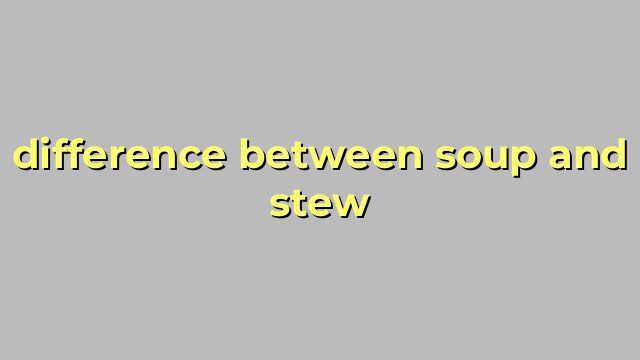The Key Differences Between Soup and Stew
Introduction
When it comes to comfort foods, soup and stew are often at the top of the list. While they may seem similar, there are distinct differences between the two. In this article, we’ll be examining the key differences between soup and stew – from their cooking methods to their textures – so that you can determine which one is right for your next meal.
What is Soup?
Soup is a liquid-based dish that can be served hot or cold. It typically consists of a combination of meats, vegetables, and/or grains that are cooked in a broth or stock. The consistency can vary from thin and brothy to thick and creamy, and it can be made with a wide range of ingredients, such as chicken noodle soup or creamy tomato soup. Soup can be a meal in and of itself or served as a side dish.
What is Stew?
Stew is a dish that is generally thicker and heartier than soup. It’s typically made with chunks of meat and vegetables that are cooked in a liquid (usually a broth or stock) for an extended period, such as beef stew or chicken and dumplings. Unlike soup where the ingredients are often left in larger pieces, stew ingredients are cut into smaller, bite-sized pieces for even cooking. The end result is a thick and satisfying dish that often resembles a casserole.
Preparation methods
The preparation methods for soup and stew are quite different. Soup is often cooked in a pot on the stove, with all of the ingredients simmering together until they’re fully cooked. Some soups, like gazpacho or vichyssoise, are served cold and require chilled preparation methods. Stew, on the other hand, is often cooked in a slow cooker or Dutch oven on low heat for hours, allowing the flavors to meld together and the meat to become tender.
Texture
One of the most significant differences between soup and stew is their texture. Soup is generally thinner and brothy, making it easier to slurp up with a spoon. Stew, on the other hand, is thicker and heartier, with chunks of meat and vegetables that require a fork to eat. The longer cooking process for stew also allows the ingredients to break down more, resulting in a soft and tender texture.
Conclusion
While both soup and stew are the ultimate comfort foods, they’re quite different from each other. Soup is a liquid-based dish that can be served hot or cold, while stew is a heartier dish that’s cooked for an extended period, with chunks of meat and vegetables that require a fork to eat. Knowing the key differences between the two can help you determine which one you’re in the mood for and how to prepare it.
Table difference between soup and stew
| Criteria | Soup | Stew |
|---|---|---|
| Consistency | Liquid-based | Thick and stew-like |
| Ingredients | Broth, vegetables, meat, or seafood | Meat, vegetables, and sometimes grains or legumes |
| Cooking Method | Simmering or boiling | Slow-cooking with some simmering |
| Texture | Varies from smooth to chunky | Thick and chunky |
| Flavor | Light and refreshing | Hearty and savory |


